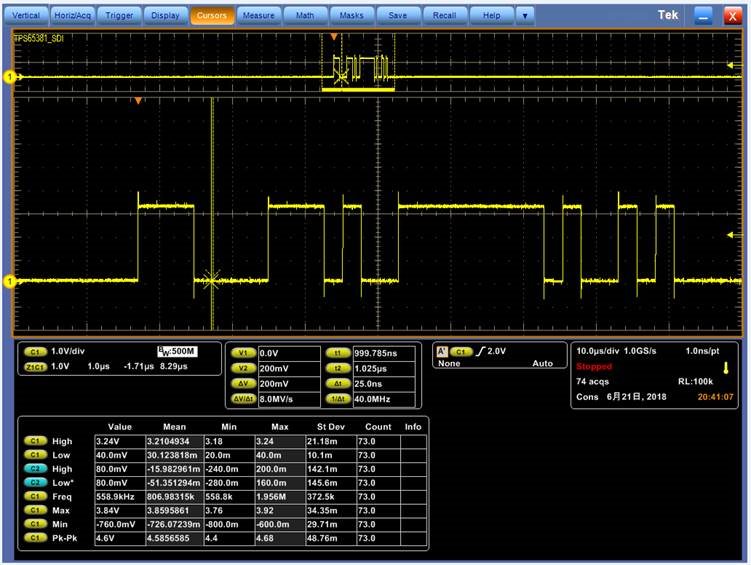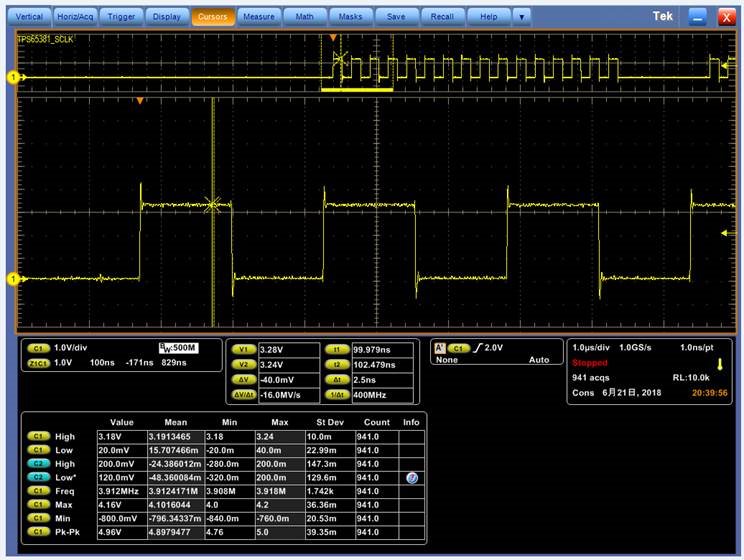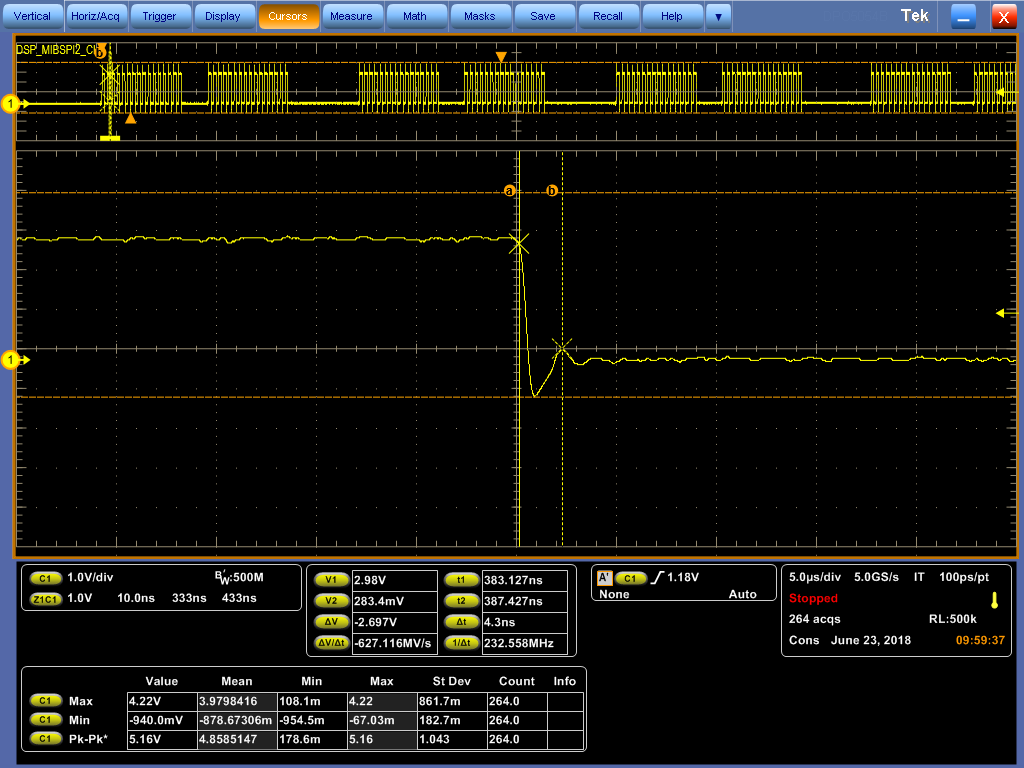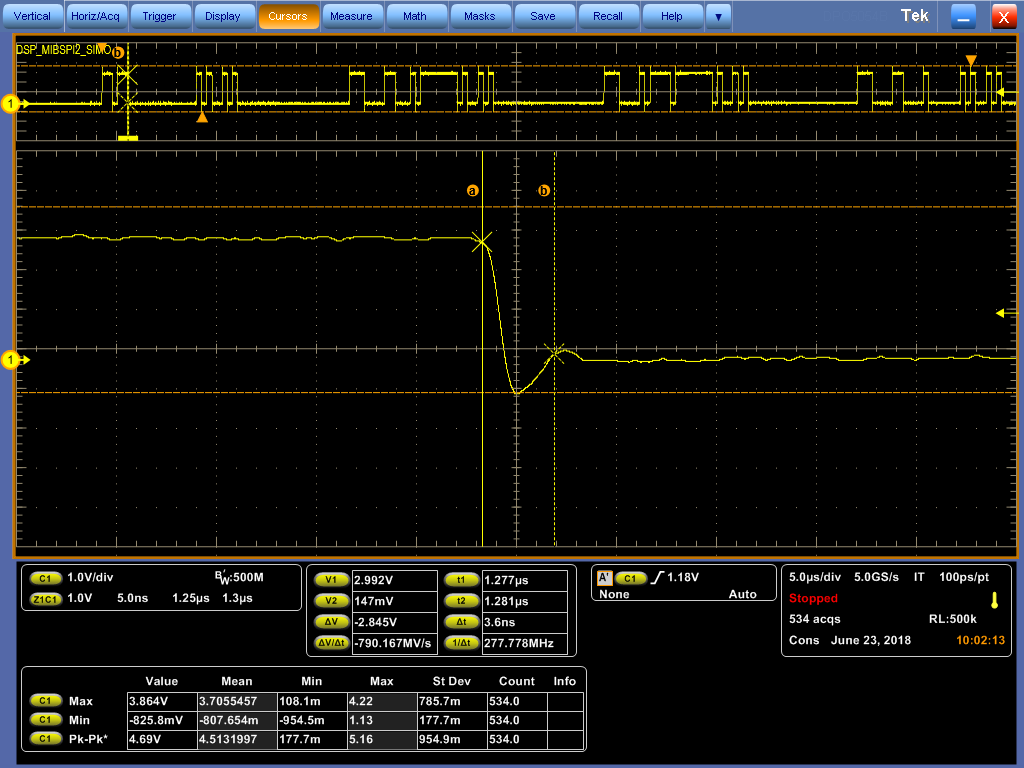Hi ,
based on my customer's test, they use TPS65381-Q1 as power supply for TMS570 and they found there is negative spike on SCLK and SDI. Those SPI communication pins are connected directly between devices.
waveforms are as attached;
SCLK: -0.8V ( <200ns)
SDI : -0.76V ( <200ns)
Please kindly help check if -0.8V( 200ns) will damage the part since spec says -0.3V and if there is AC spec on this.
Thank you.
BRs
Given






